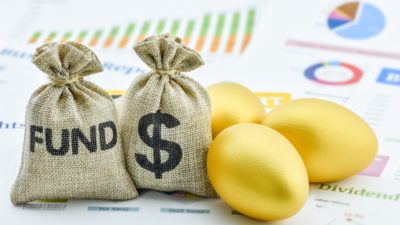It’s a no-brainer. Dividend stocks are some of the best stock options to add to your portfolio. Even when the markets are down, the total amount of returns investors collect from dividends in addition to stock gains make them far more lucrative than non-paying dividend stocks, hands down.
While there are a number of dividend stocks out there I could recommend, coming up with your own passive-income portfolio can be time consuming, not to mention costly if you’re not using a Tax-Free Savings Account.
If you’re an investor looking for a hands-off approach to investing, then exchange-traded funds (ETF) can be the way to go. An ETF chooses stocks for you and can still include a great dividend. One such option: Vanguard Canadian Short-Term Corporate Bond Index ETF (TSX:VSC).
The ETF tracks the Bloomberg Barclays Global Aggregate Canadian Credit 1-5 Year Float Adjusted Bond Index and limits holdings to high-quality corporate bonds with superior credit ratings. As of writing, it holds 298 stocks in its portfolio, with a year-to-date return of 3.71%. But before you go snatching up this fund, let’s dig in to see if it’s right for you.
The ETF is designed to give investors lower exposure to interest rate risk than other ETFs at the lowest cost. This means the stock tends to hold mostly Canadian federal and provincial bonds as well as those issued by Canadian companies, like banks, which make up 60% of the fund. The fund then weights its holdings by market value.
The problem with the ETF focusing so much on the financials sector means it opens itself up to some risk; however, the firms it’s chosen are financially stable for now and carry high credit ratings. And while other ETFs usually have a 36% stake in government issues, this bet has paid off for this ETF. Since its introduction in 2012, the fund has beat the category average by 1% annually.
Another part of the ETF that cannot be ignored is how cheap it is, and that’s in two ways. First, there’s the share price of $24.50 at writing. Second, there’s the incredibly low management expense ratio, where Vanguard charges only 0.11% annually for this fund. In comparison, its peers on average charge about 0.73%.
So, is it a buy? The cost of this stock coupled with its historical performance should already have investors taking a good look at this ETF. That performance should continue for the foreseeable future, as the market-value weighting system mitigates trading costs, as it focuses the portfolio on the largest and most liquid issues on the market.
However, with such a focus on the financial sector, investors should be warned that should this area go down, this stock will likely dip, though perhaps not for long. And while the largest and most liquid issues tend to have high credit ratings, they don’t tend to see the highest returns on the market.
Then, of course, there’s the ETF’s dividend yield of 2.71%, which is the highest of the Vanguard ETFs. So, basically what it comes down to is that you’re getting the lowest-cost ETF with the highest dividend yield. If you’re a hands-off investor looking for extra cash, I have to say, it doesn’t get much better than this ETF.









